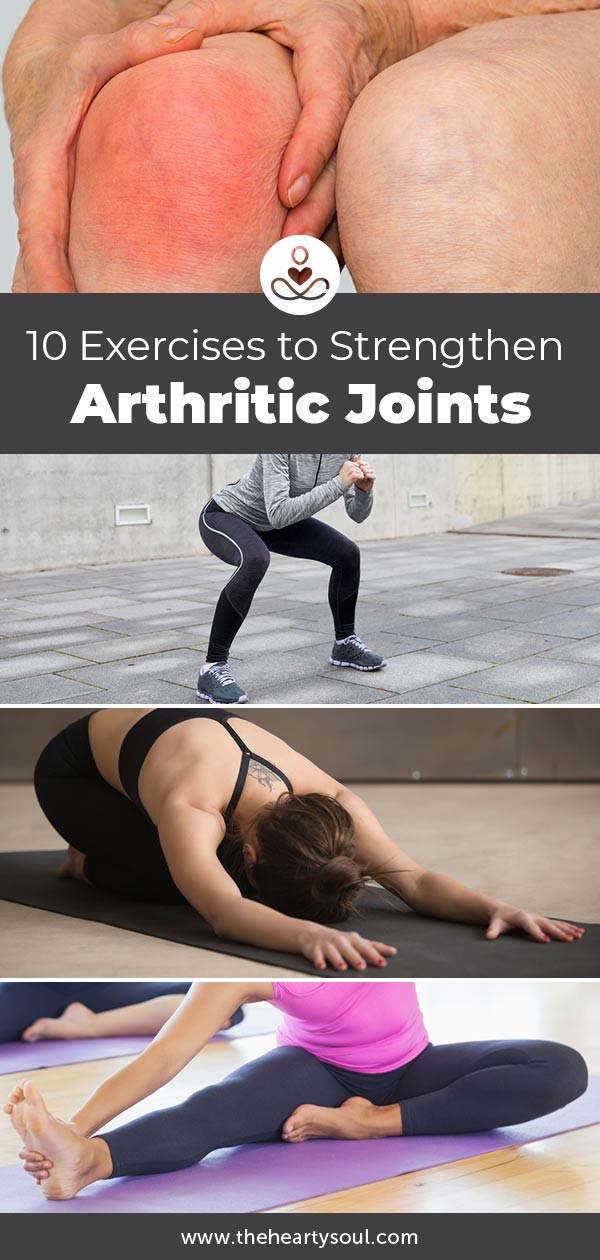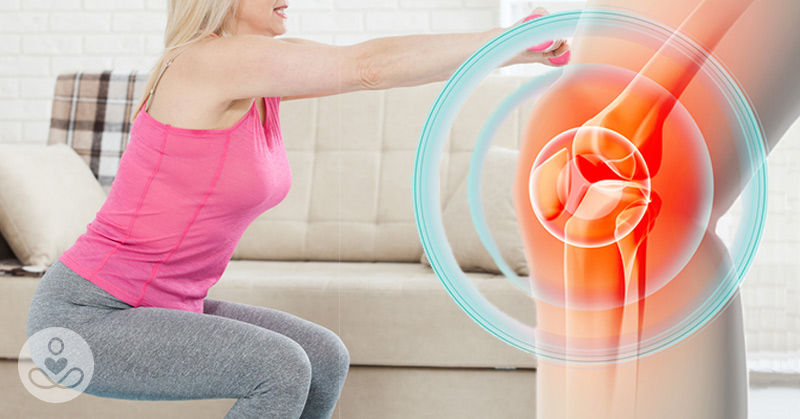Of the more than 100 different forms of arthritis and degenerative tissue disease that affect adults, Rheumatoid arthritis (RA) and Osteoarthritis (OA) are two of the most common ( though RA affects about one-tenth as many people as OA). In the U.S alone, more than 27 million people are affected by OA, and approximately 350 million people worldwide suffer from some type of arthritis.
Even though these two forms of arthritis have different underlying causes—OA is caused by mechanical wear and tear on the joints related to aging, while rheumatoid arthritis is an autoimmune disease—they still share similar symptoms, including joint pain, stiffness, difficulty moving, and poor flexibility, and common treatments. With both RA and OA, pain is often managed with long-term prescription and/or over-the-counter medicine use, physical therapy, and support devices like splints, braces or orthotic inserts.
And there is one other form of treatment that is widely recommend for all arthritis patients.
Experts recommend that people with arthritis make a strong effort to stay active and get enough exercise, even if it might feel difficult to do so at first. Many people with arthritis avoid movement due to discomfort, but this is actually counterintuitive. Movement can help to reduce pain and lubricate joints with synovial fluid, while also cooling inflammation, increasing energy, lifting the mood and supporting the immune system. In fact, according to the Arthritis Foundation, exercise is known to be one of the best natural treatments for arthritis. (1)
If you’re someone dealing with the aches and pains associated with arthritis, here are 10 exercises that can help:
- Squats— Squatting (with good form) can help to strengthen the core and legs, as long as it doesn’t aggravate your knees. Try performing about 10-20 reps in a row, two or three times daily. Root your heels in the ground while you squat, tuck your tummy in so your back stays straight, and keep your knees and toes facing forward. For extra support, perform squats against a wall. You can try holding a medicine ball or light weights to make squats more challenging, but be careful about squatting with heavy weights. (2)
- Standing Wall Pushups—Pushups of all kinds are great for the upper body (arms, shoulders and upper back) and even for the core. Aim to do 10-15 in a row, completing 2-3 sets daily. For support, face a wall, standing a little farther than arm’s length away. With your hands against the wall at shoulder height, bend your elbows and lower your upper body toward the wall. Hold for several seconds if you can, then slowly push yourself back to straighten your arms. You can also try push-ups on the ground with your knees touching the floor. (3)
- Lateral Arm Raises—Sitting in a chair with your back straight, hold light weights in each hand (about 3 to 10 pounds each). Rotate your arms so that your thumbs face outward; gently raise your arms out to the sides so they are parallel to the ground; pause; and then slowly bring your arms down. Repeat about 15 times, completing 2-3 sets. (4)
- Knee Extension Exercises—To strengthen your quadricep muscles, practice intervals of knee extension exercises for about 30 to 45 seconds at a time. Sit in a chair and take 3 seconds to extend your legs in front of you so they come parallel to the floor (or do one leg at a time). Lift until your knee is straight and foot is flexed, with your toes pointing toward your head. Hold your legs here for several seconds; then take 3 seconds or more to lower your legs back down. (5)
- Swimming, Pool Walking & Water Aerobics—Water and swimming exercises have been shown to help reduce joint pain and stiffness associated with OA and to build muscle strength and functionality. (6) Try walking in a pool on the shallow end for about 20-30 minutes to get some aerobic exercise. The water adds resistance, requiring your muscles to work harder in order to keep you moving. Taking a water aerobics class or swimming laps in a pool (or any open body of water) is also great, especially if you’re doing the back- or breaststroke.
- Cycling/Bike Riding—Bike riding at a moderate intensity for about 20-40 minutes at a time is a good form of cardiovascular exercise that also builds muscles in the legs and back. Try hitting some hills to make biking more intense. To protect your back from aching, sit upright as much as possible. If you prefer to stay inside, ride a stationary bike or take a spin class—just avoid anything very intense that causes you pain.
- Elliptical Intervals—Try interval training on an elliptical by alternating between periods of light intensity and periods of harder effort. As long as it doesn’t strain your back, you can also increase the incline and resistance to help strengthen to your lower body.
- Yoga—Yoga is a great way to stretch the whole body and also build both lower- upper-body strength. It’s a good introductory form of exercise for people with arthritis who are mostly sedentary, since it tends to be gentle and self-guided. (7) Beneficial yoga poses include: neck stretches, Warrior 1 and 2, Chair pose, Forward Folds and Tree pose (great for improving balance). Just be careful to avoid poses that cause any pain and place too much pressure on fragile joints. For example, most backbends, arm balances, and even Downward Facing Dog can stress the wrists.
- Pilates—Pilates is a low-impact way to improve core strength. Several Pilates exercises recommended by physical therapists include Roll Downs (tuck your chin to your chest; draw your belly in; and fold over your legs), Reclined Twists (laying on your side, bring your knees bent to one side then another) and basic crunches. (8)
- Tai Chi—Practicing Tai Chi may help prevent falls, relieve stress and improve coordination. (9) This ancient form of mind-body exercise features a fluid series of postures, similar to a dance. Some of the best Tai Chi poses for arthritis include Stepping, Whips, Rollbacks, and Pushes. Get started by finding a beginner’s Tai Chi class in your area, or practicing at home using a DVD or youtube tutorial.
Regarding exercise intensity, aim for moderate intensity when doing cardio (you should be able to talk but not sing). You can also track your heart rate, aiming to stay within a range of 50 percent to 75 percent of your maximum heart rate. When weight-lifting, try to use weights that allow you to complete two sets of 10 repetitions each before your muscles are fatigued.
You might be wondering if there are certain exercises that someone with arthritis shouldn’t do. Physical therapists and orthopedics typically recommend avoiding very intense activities like sprinting or even running that cause fatigue; sports like golf, basketball or tennis that involve repetitive movements, jumping and twisting; and any exercises that involve lots of toe touches, leg lifts and lifting weights above your shoulders, which may strain joints. If you’re just starting an exercise program it’s always a good idea to check with your doctor or physical therapist to get clearance, this way you avoid putting yourself at risk for developing an injury.

Sources
- https://www.arthritis.org/living-with-arthritis/exercise/
- https://www.arthritis.org/living-with-arthritis/exercise/how-to/lower-body-exercises.php
- https://go4life.nia.nih.gov/exercises/wall-push
- https://www.arthritis-health.com/treatment/exercise/shoulder-strengthening-exercises
- https://www.ncbi.nlm.nih.gov/pmc/articles/PMC3718434/
- https://www.ncbi.nlm.nih.gov/pubmed/26773104
- https://www.ncbi.nlm.nih.gov/pubmed/25834206
- https://www.pilatesplusphysio.co.uk/2015/10/how-can-pilates-help-with-arthritis/
- https://taichiforhealthinstitute.org/why-tai-chi-for-arthritis/

